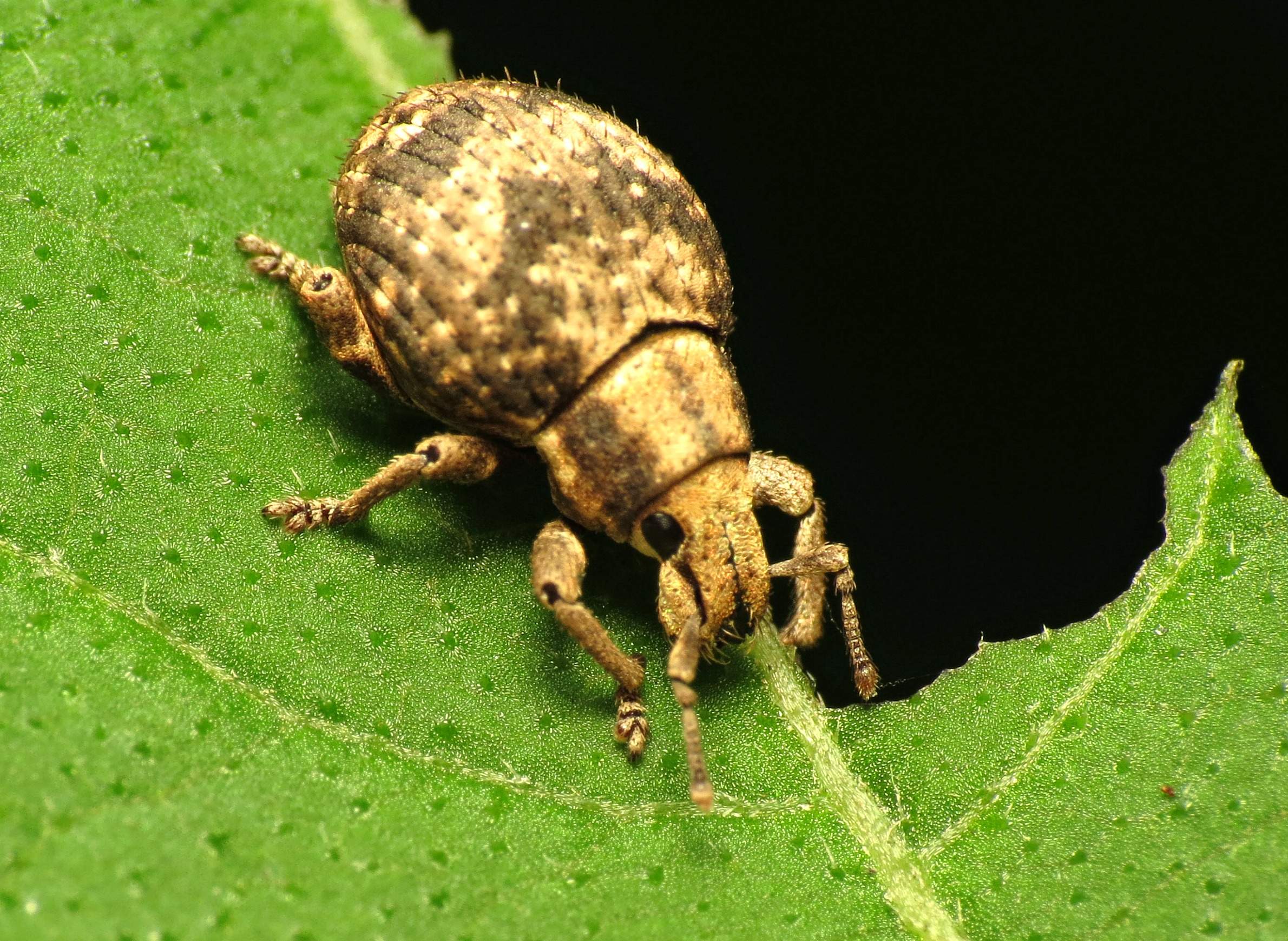
The two-banded Japanese weevil was first spotted in Wisconsin in 2016.

The two-banded Japanese weevil was first spotted in Wisconsin in 2016.
Move over Popillia japonica, there's a new "Japanese beetle" in town.
Wisconsin typically sees a few new invasive species each year. In 2016, one of the surprises was the arrival of the "two-banded Japanese weevil" (Pseudocneorhinus bifasciatus), often simply called the "Japanese weevil." Weevils themselves are technically a type of beetle from the hyper-diverse family Curculionidae, which contains a plethora of weevils, curculios and multitudes of bark beetles.
Members of the public often confuse the brown and green Japanese beetles feeding on landscape plants during the summer with the orange and black Asian lady beetles (Harmonia axyridis) that invade homes in the fall. Given the name of this new "Japanese weevil," the arrival of this creature could confuse the situation in Wisconsin even more.
What is the Japanese weevil?
The Japanese weevil is a non-native beetle that feeds on a wide variety of landscape plants, particularly shrubs. Adult Japanese weevils are about one fourth inch long with a gray or brownish, pear-shaped body and black bands across the wing covers (called elytra). The pale larvae (grubs) live in the soil and feed on roots of suitable host plants. The pest has not been in Wisconsin long enough for entomologists to fully understand its local life cycle, but given the pattern in other states, this insect will most likely complete one generation per year, with adult presence and feeding damage occurring during the summer from late June through August.
Where is the Japanese weevil from?
Very similar to the Japanese beetle, the Japanese weevil is native to Japan and first popped up in the U.S. in 1914, via the transport of infested nursery stock. Also like the similarly named beetle, the Japanese weevil feeds on a wide range of landscape plants.
When it first showed up in Wisconsin in 2016, the Japanese weevil was found on a variety of ornamental plants in the Madison area. How this insect got to Wisconsin remains a mystery, but the movement of infested potted plants is the most likely explanation, as the species is not capable of flight.
While the Japanese beetle is common across many parts of eastern North America, the Japanese weevil has a much more scattered distribution and can be found primarily in the mid-Atlantic region with scattered cases in the Illinois, Iowa, Wisconsin and Oklahoma.
What does this insect mean for Wisconsin?
Luckily, the Japanese weevil may not be nearly as big of a threat to landscape plants as the Japanese beetle. When lots of Japanese beetles are present, entire trees can have their leaves nibbled into lace-like skeletons. In contrast, when the Japanese weevil feeds, it tends to notch the edges of leaves. This damage can resemble the feeding of many caterpillar species, and healthy plants should be able to tolerate it. Reports from other states suggest this insect may be a localized phenomenon and is unlikely to cause very severe damage.
Anyone in Wisconsin who comes across insects that resemble the Japanese weevil and are feeding on landscape plants should send digital images and/or physical specimens to the UW Insect Diagnostic Lab for confirmation, so its distribution around the state can be tracked.
University of Wisconsin-Extension entomologist PJ Liesch is director of the UW Insect Diagnostic Lab, and he blogs about Wisconsin insects and can be found @WiBugGuy on Twitter.